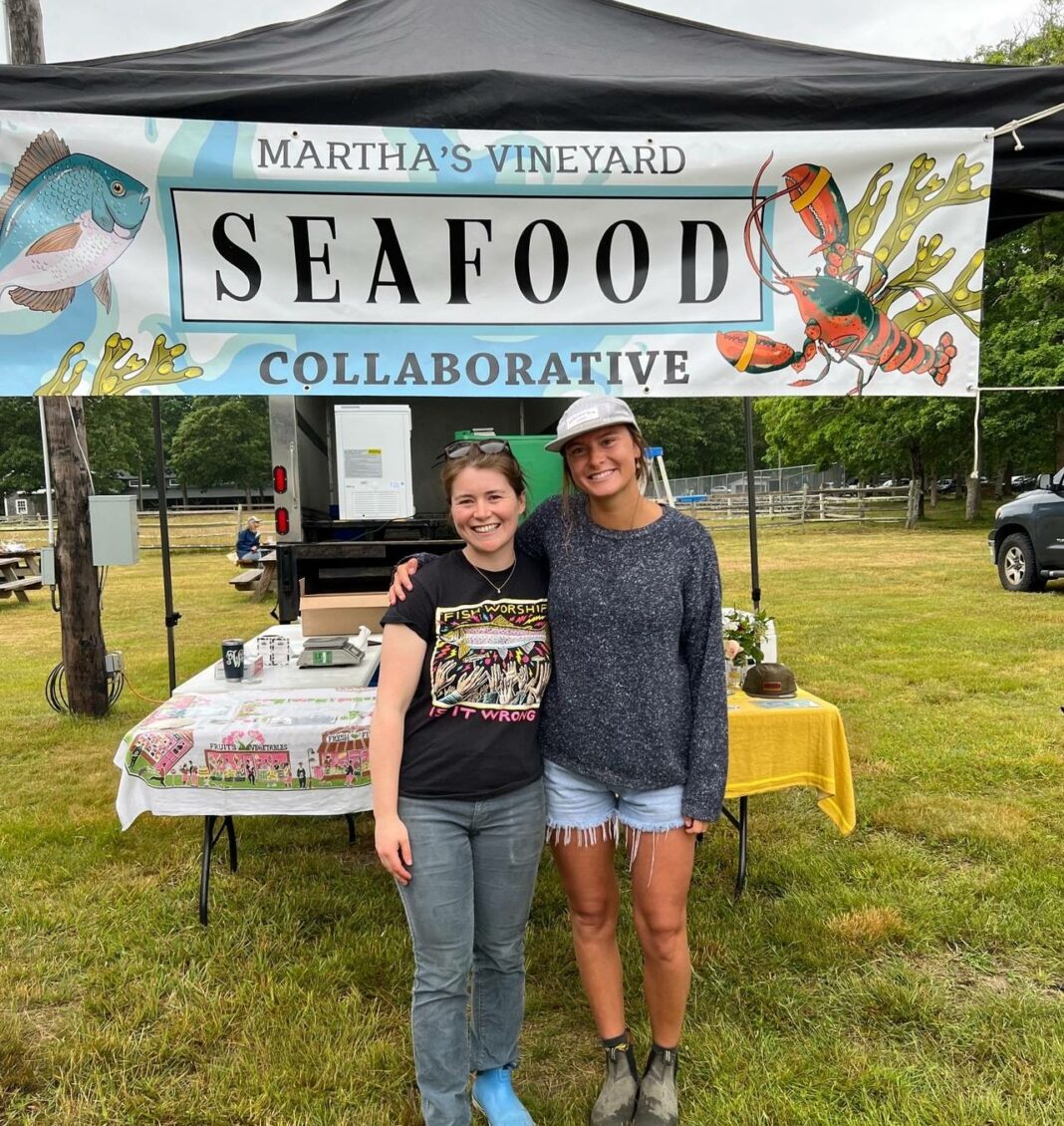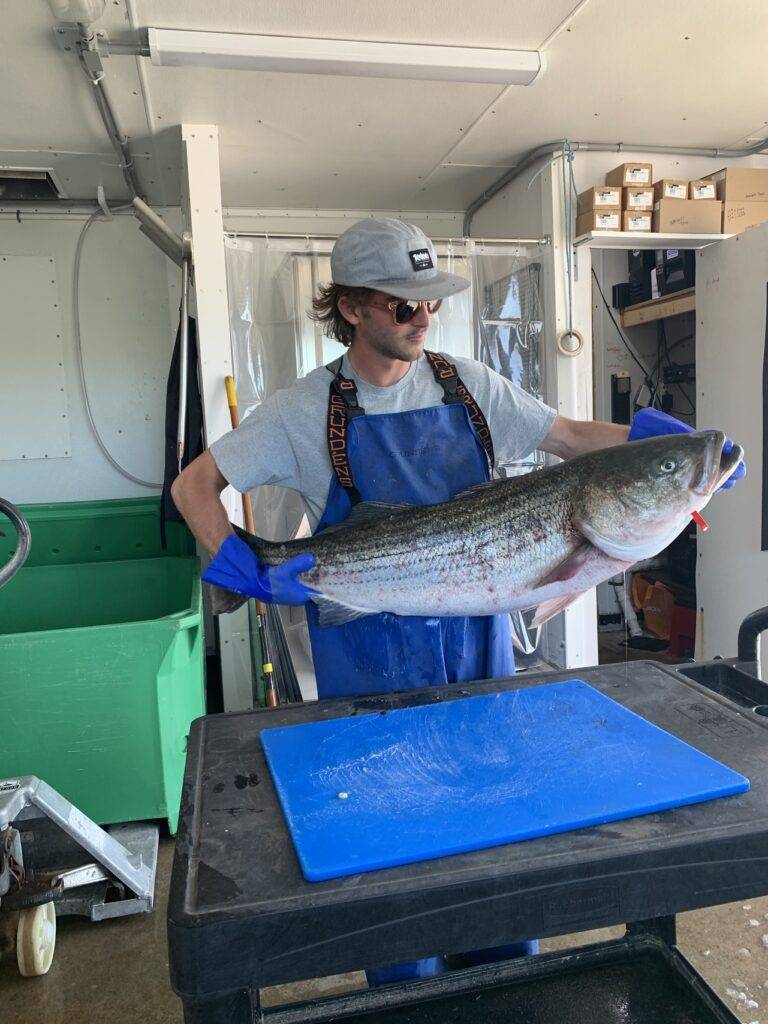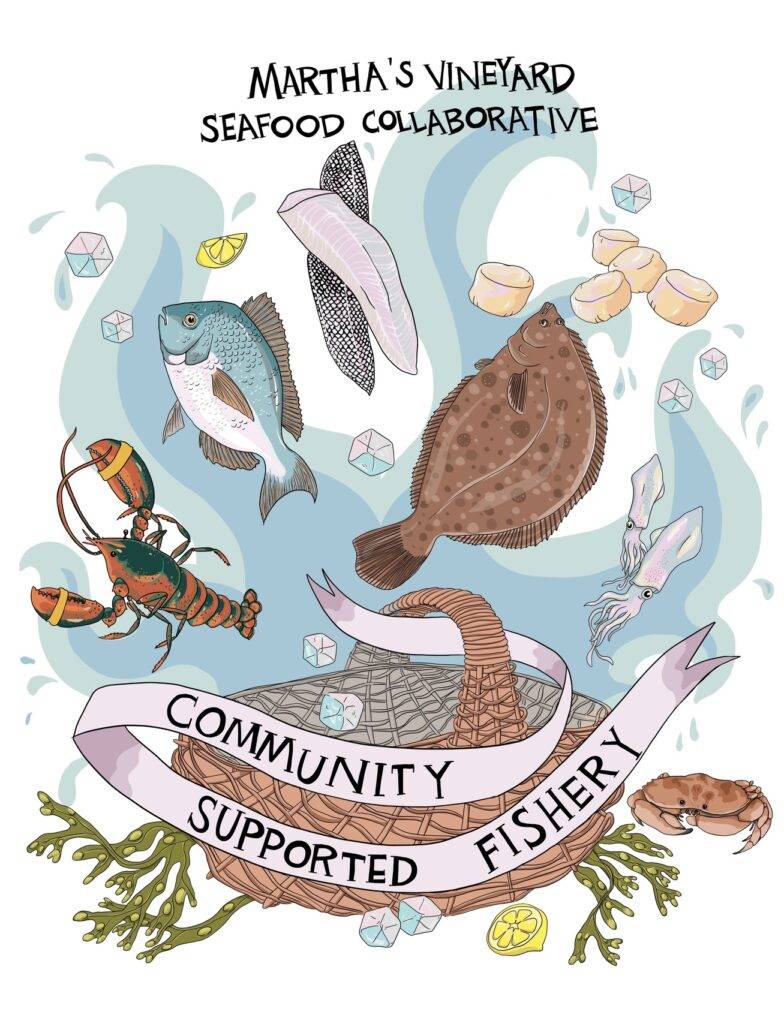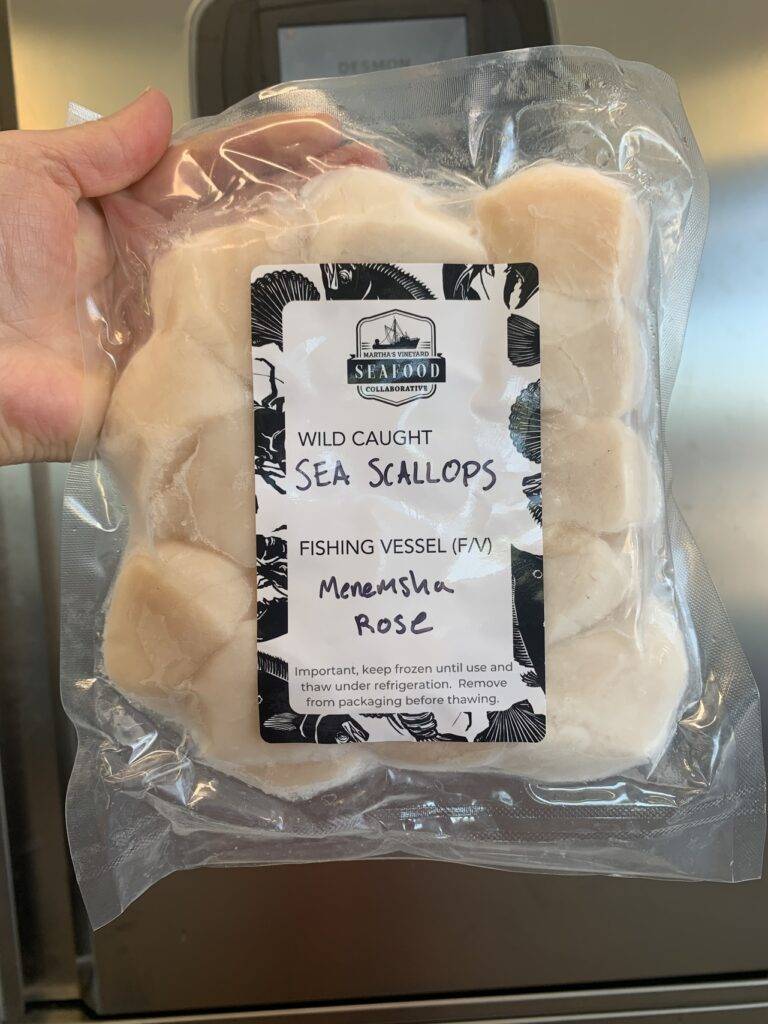At the top of the list of all the attractions that draw visitors to the Vineyard from around the world — up there with the Island’s picturesque beaches and laid-back, take-your-time atmosphere — is our seafood. It’s so fresh: A hungry market-goer looking for some lobster or scallops could arrive in Menemsha at the same moment the boat that caught the bounty is pulling away from the dock.
The Martha’s Vineyard Fishermen’s Preservation Trust (MVFPT) and the Martha’s Vineyard Seafood Collaborative are offering a new way for people to purchase fresh seafood directly from local fishermen. The newly established Community Supported Fishery (CSF) program is aimed at providing direct-to-consumer access to the freshest seafood available. At the same time, anyone who buys into the opportunity can be assured that they are bolstering the Island economy and significantly reducing the carbon footprint caused by shipping fish off-Island.
According to Phoebe Walsh, operations manager for the Martha’s Vineyard Seafood Collaborative, the project started with a small winter CSF as a pilot to see how the community responded. “People were really excited, and we felt like a direct-to-consumer model would help bring in money to keep the [CSF] operation going,” Walsh says. She explains that the CSF initiative is based largely on the Community Supported Agriculture model — the up-front CSF fees help get the program going early in the season and enable the trust to buy fish from fishermen before the summer’s increased demand.
Of course, the CSF includes all the delicious scallops, bluefish, and lobster folks might want. But it also provides members with many other fish and shellfish species that are equally healthy and tasty, including sea bass, scup, and other finfish that are often underutilized in restaurants and family kitchens. “And that’s one part of the education component,” Walsh explains. “So much of this fish goes to waste because people might be unfamiliar with it.” During the planning phase of the project, the CSF team discussed how they could balance the price to make fish affordable and accessible for the Island, but also support local fishermen.
A summer membership can begin anytime June through August and includes three monthly pickups. A fall membership runs September through October and includes two monthly pickups. Seasonal memberships come in small and large sizes, priced at $345 and $675 for summer and $230 and $450 for fall. A large share includes sixteen to twenty servings of locally caught seafood per pickup (enough for four people to eat once a week, for four to five weeks, so between $11 and $14 per serving). A small share includes eight to ten servings of locally caught seafood (enough for two people to eat once a week, for four to five weeks, so about $11 per serving).
Although it’s a sizable upfront cost, Walsh said she hopes people appreciate the value they get from the CSF program when they break down the membership on a per-serving basis. “Plus, look what you are getting — very high-quality seafood that is freshly flash frozen and caught by people right here on the Vineyard,” Walsh says. “At the same time, people who aren’t able to commit to that larger sum [can still] buy a little bit at a time and get some of the more affordable options like scup or sea bass.”
This is the first year that the MVFPT has been able to sell fish at a true retail location, and Walsh says the West Tisbury Farmers Market seemed like a sensible option. It’s more convenient for many Islanders than their home base in Menemsha, and it encourages seafood customers to also peruse the rest of the Market’s Island-grown wares. “People seem to really be enjoying it already,” Walsh says, “and it’s fun to provide that connection to food.”
She adds that CSF bundles are a great option for people who aren’t very comfortable with cooking fish, since the MVFPT provides recipes and meal ideas to those who pick up. But the program is also great for the serious chef looking to try something new. “We have everyone from people who are brand new to cooking fish, all the way to professional, very experienced cooks that want access to high-quality fish in order to broaden their culinary horizons a bit,” Walsh says.
Shelley Edmundson, MVFPT executive director, says that during their normal operations in the wholesale fish market, a lot of seafood was being exported, and the economic advantage of selling fish locally was being lost. “The idea of having a CSF kept surfacing,” Edmundson says. “We thought that was such a great way to get fresh catch to everybody, and to tell the story of the catch.” Although there were a number of regulatory barriers to work through and logistical challenges to conquer, Edmundson says that the effort was worthwhile, because getting fish directly to consumers isn’t something that fishermen can always do themselves.
The recent Farmers Market was a great test run, according to Edmundson. She calls the first CSF pick up a “major triumph” that proved the efficacy of their model and illustrated how much the community wants access to this kind of food. She also reiterated that the program will be running through the fall (with pickup continuing at the Farmers Market), so people should look into purchasing their fall shares soon.
Just as a fruit or vegetable that is an odd shape, size, or variety might get passed over in a grocery store, Edmundson says that some sizes and species of fish are often overlooked by everyday shoppers and culinary experts alike. “Oftentimes, a restaurant just wants certain sizes of everything, but that’s just not how it works when you fish,” she says. “It leaves this whole pocket of misfit sizes and species that are otherwise not sold or not consumed.” The CSF program hopes to find a place for all that good food, so it’s not wasted and the fishermen can have a market for their entire haul.
For Edmundson and the rest of the MVFPT, connection to food and people is key. At the farmers market, shoppers or CSF members have access to a wealth of information regarding the boat the fish is from, how it’s caught, and how to prepare a delicious meal. “We want to get people hooked on this kind of food and this kind of awareness, so they can go to another market or restaurant and make those same choices,” Edmundson says. At the same time, she adds, participants and buyers can know exactly who pulled that fish out of the net or off the line. “You might pick up your package and put it in your cooler and see that it’s fish from Johnny Hoy’s boat,” Edmundson says. Eventually, the MVFPT wants to have a page where folks can see all the vessels that sell to the program, and can read their stories. “Who is working hard to catch what you are eating? It all makes buying and making great food a little more magical.”
Visit mvfishermenspreservationtrust.org/csf for more information on pricing, schedules, and more.




